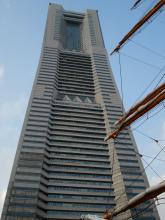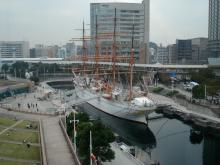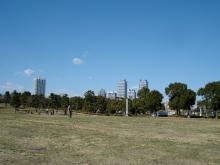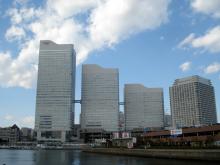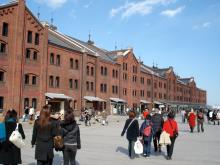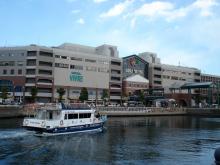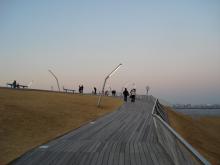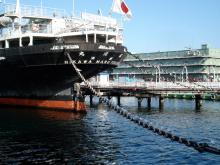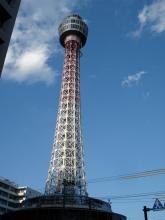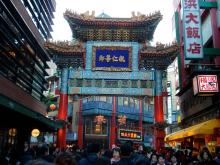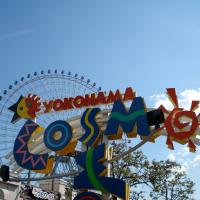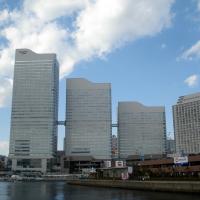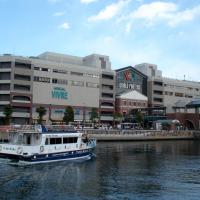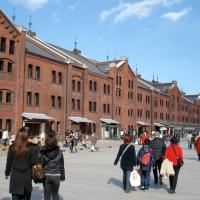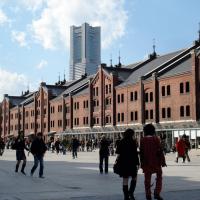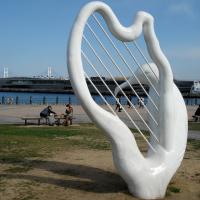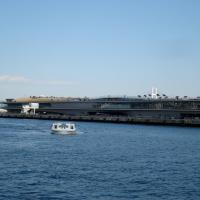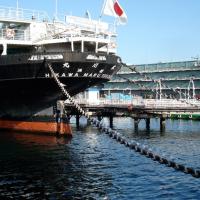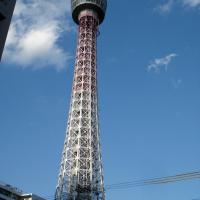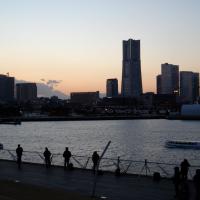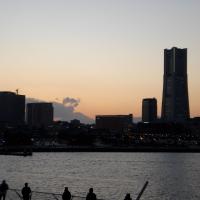Yokohama City
Yokohama Seaside
Yokohama Seaside
The most scenic portion of Tokyo Bay is not in Tokyo but in Yokohama City. From the commercial and shopping center of Yokohama City around Yokohama Station, it is a short train ride to the east to reach the seaside. This part of the city has been redeveloped over the last few decades with building developments like Minato Mirai 21, elevated walkways and improvements made to many parks.
A full day is recommended to see the full length which stretches from Minato Mirai 21 to the historic port area of Kannai and beyond to the old western residences quarter in the hills overlooking the bay. The Minato Mirai Line (subway) which follows along the water from Yokohama Station can be used to quickly move from area to area. Cheap 100 yen sightseeing buses are also available.
Attractions
Minato Mirai 21 Area
Cosmo Amusement Park
The Cosmo Amusement Park is a decent sized amusement park to the east of Minato Mirai 21. It's best and most famous attraction is the 105 meter tall CosmoClock 21. This ferris wheel was the tallest in the world when it opened in 1989. It's probably still the world's biggest clock. Its nighttime illumination is spectacular.
Nippon Maru Boat Park
Next to the Yokohama Maritime Museum is a paddle boat lagoon called the Nippon Maru Boat Park. Go home saying you bravely paddled on Tokyo Bay.
Yokohama Landmark Tower
Yokohama Landmark Tower is the tallest habitable building in Japan (295.8 meters). Its elevators are the second fastest world and tourists can take a ride on them up to the observation floor. It was constructed as part of the Minato Mirai 21 waterfront redevelopment and was completed on July 14, 1993.
Yokohama Maritime Museum
Yokohama has a proud marine history as the site of one of the first ports to be opened to the outside world. Yokohama Maritime Museum is an excellent educational attraction for all ages. Japan's most famous marine training vessel, the Nippon Maru, is docked permanently outside under the Landmark Tower.
Yokohama Museum of Art
The Yokohama Museum of Art opened in 1989 and is located next to Minato Mirai Station.
Yokohama Rinkai Park
Yokohama Rinkai Park is west of Yokohama's conference center. It is mostly just a large grassy area,, but it has a nice promenade next to the ocean and the view is quite nice. It makes for an excellent place to relax out in the sun.
Queen's Square Yokohama
Queen's Square Yokohama is a complex of buildings with shopping malls and commercial space. The three towers have unique sloping roofs can be easily seen from many places to the east.
Warehouse District
Red Brick Warehouses
The red brick (renga in Japanese) warehouses beside the water in Yokohama are some of the earliest built to store trading goods. Two of the warehouses have been restored and a variety of small shops, an art gallery and other businesses are located in them.
World Porters
World Porters is a large shopping mall with a movie multiplex located to the west of the warehouses.
Seashore Promenade W->E
Osanbashi Pier (Ship Terminal)
The oldest pier in Yokohama, Osanbashi, was rebuilt from 1987 to 2002 to meet the demands of today's massive cruise ships and, in the process, the project created a architectural masterpiece. It's a bit of a hike, but one can freely walk along its sculpted roof and look out on one of the best harbor views in Japan. It is just as, if not more, pretty at night when the CosmoClock 21 lights up across the water.
Yamashita Park
Yamashita Park runs along the shore from east of Osanbashi Pier to the Marine Tower. Numerous statues and memorials are in the park.
Hikawa Maru
The Hikawa Maru crossed the Pacific between Yokohama and Seattle 248 times from 1930 to 1961. During the war, she served as a hospital ship before returning to route in 1953 and is the only surviving imperial passenger ship. The 163 meter Hikawa Maru is a symbol of Yokohama and is moored permanently on the east side of Yamashita Park.
Marine Tower
The "vertically challenged" Marine Tower's viewing platform may be just 100 meters above ground but its still the tallest lighthouse in the world. This attraction was one of the first of its kind in Japan when it was finished in 1961. The tower reopened in 2009.
Website: Yokohama Marine Tower
Yokohama Chinatown
Yokohama's Chinatown is the largest of the top three Chinatowns in Japan. Starting in 1859, with the opening of Yokohama Port, Chinese and other nationalities came to trade and live in the new foreigner settlement. On any holiday, the area is packed with tourists from all over Japan and the world.
Harbor View Park and Western Settlements
Harbor View Park
There is a nice viewpoint in Harbor View Park where you can see Yokohama harbor and the Yokohama Bay Bridge from above. Harbor View Park is located to the east of Yamashita Park. There is a steep slope that rises from beyond the expressway. Ruins of French buildings are located on this bluff. A number of museums are located to the north of the park.
Churches and Houses
Above the harbor to the east are numerous houses, buildings and chruches that were built by early western settlers. The noteworthy places are fairly spread out so it will take a fair ammount of time to wander around them.
Cemetery
One of the best attractions here is a place people are dying to get into. For Japanese people, the old foreigner cemetery is a historical curiosity and an odd sight indeed. For history buffs of all nationalities, studying graves gives you an intimate view on people's lives through history. Tours are offered and it is no longer possible to enter without a guide.
Getting There
The Minato Mirai Line Subway goes from Yokohama Station along the coast to Chinatown (Motomachi-Chukagai Station) with stops at all major attractions along the way.
JR Sakuragicho Station is located at the western end near Minato Mirai 21. The horizontal escalator cuts the walking time to less than 10 minutes between it and nearby attractions. Nearer to Chinatown is JR Ishikawacho Station.
Cheap 100 yen sightseeing buses run on a number of routes that follow along the water. A variety of different day passes can be bought for around or under 500 yen to travel around this area.
Yokohama is connected to Tokyo by numerous train lines. See the Yokohama City page for more details.
Posted: April 17, 2011 Updated: February 25, 2015

